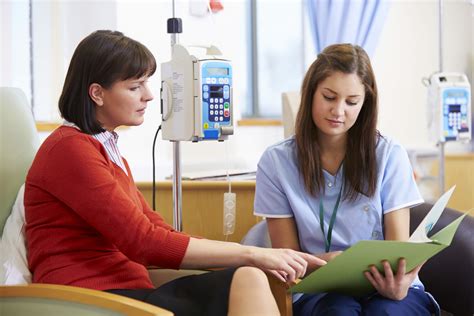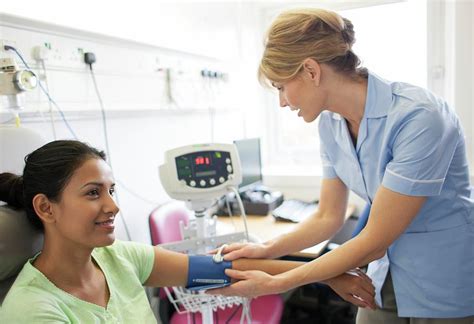Blood donation is a vital act of generosity that has the power to save lives and support our community. Despite its critical importance, many regions face ongoing blood supply shortages, making it essential to find and support local donation centers. This article will explore the significance of blood donation, the benefits it offers, and the eligibility criteria for donors. We’ll guide you through the process of finding local donation centers and provide a step-by-step overview of what to expect during your visit. Additionally, we’ll share inspiring stories from recipients and offer ways to spread awareness and encourage others to participate.
Delve into this topic with weninsure.xyz to gain a thorough understanding.
1. Importance of blood donation
Blood donation plays a crucial role in maintaining and improving public health. It provides a lifeline for patients undergoing surgeries, cancer treatments, and those with chronic conditions that require regular blood transfusions. Every donation can help save up to three lives, highlighting its profound impact on individual patients and the healthcare system as a whole.
Blood is a unique resource with a limited shelf life, making consistent donations essential to ensure that hospitals and emergency services have an adequate supply. Donations are used in a variety of medical situations, from treating trauma victims and supporting childbirth to managing complex medical conditions. The availability of blood can significantly influence patient outcomes and recovery times.
Moreover, donating blood is a simple yet powerful way to contribute to your community. It fosters a sense of solidarity and responsibility, as each donation helps build a safety net for those in urgent need. By participating in blood donation drives, individuals become active contributors to a crucial public health effort, reinforcing the value of community support and collective well-being. Regular donations not only help save lives but also strengthen the resilience of our healthcare systems.

2. Current blood supply shortages
Despite the critical need for blood, many areas around the world are experiencing significant blood supply shortages. This issue is compounded by several factors, including seasonal fluctuations in donations, increased demand for blood products, and the logistical challenges of maintaining a steady supply. Hospitals and emergency services often face difficulties in securing enough blood to meet the needs of patients, particularly during periods of crisis or high medical demand.
The COVID-19 pandemic further exacerbated these shortages, as restrictions and health concerns led to fewer people visiting donation centers. Although the situation has improved, the recovery has been slow, and many regions still struggle to maintain sufficient blood supplies. Blood banks often operate at reduced capacity, leading to the need for more frequent and urgent appeals for donations.
Additionally, certain types of blood, such as rare or universal donor types, are especially scarce. The imbalance between supply and demand underscores the importance of regular donations from healthy individuals to ensure that blood is available when needed. Addressing these shortages requires a concerted effort from the community, healthcare professionals, and blood donation organizations to encourage and facilitate more frequent and consistent blood donations.

3. Benefits of donating blood
Donating blood offers numerous benefits beyond its immediate impact on saving lives. For the donor, it provides a sense of fulfillment and the satisfaction of contributing to a crucial cause. Regular blood donation has also been linked to potential health benefits, such as improved cardiovascular health and reduced risk of certain diseases. The process helps in the regeneration of new blood cells, which can be beneficial for overall well-being.
Moreover, blood donation is a straightforward way to support the community and strengthen public health systems. Each donation can help save up to three lives, making it a powerful and tangible contribution. By participating, donors play a vital role in ensuring that blood is available for emergencies, surgeries, and ongoing treatments, thus enhancing the resilience and effectiveness of local healthcare services.

4. Eligibility criteria for donors
To ensure the safety of both donors and recipients, there are specific eligibility criteria for blood donation. Generally, donors must be in good health and meet certain age and weight requirements. Most donation centers require donors to be at least 17 years old, though some locations may accept donors as young as 16 with parental consent. The minimum weight requirement is typically around 110 pounds (50 kg).
Donors should have a healthy hemoglobin level, which is usually checked before donation. It’s important that donors are free from infections or illnesses, as well as not on certain medications that could affect the donation process. Individuals with chronic health conditions or recent surgeries should consult with medical professionals to determine their eligibility.
Additionally, there are temporary deferrals for those who have recently traveled to regions with specific health risks, received certain vaccinations, or had recent medical procedures. Blood donation organizations often provide detailed guidelines to help potential donors understand these criteria. Meeting these requirements ensures a safe donation experience and contributes to the overall effectiveness and safety of the blood supply.
5. How to find local donation centers
Finding local blood donation centers is straightforward and can be done through several methods. Many national and regional blood donation organizations have websites with search tools that allow you to locate nearby centers. Simply enter your zip code or city to find available locations.
Local hospitals and community health centers often host blood drives and can provide information on where to donate. You can also check with local clinics and public health departments, which frequently collaborate with blood banks to organize donation events.
Social media platforms and community bulletin boards may list upcoming blood drives and donation opportunities in your area. Additionally, some mobile apps are designed to help you track donation events and schedules.
By using these resources, you can easily find a convenient donation center and contribute to the essential effort of maintaining a stable blood supply in your community.
6. Step-by-step guide for the donation process
The blood donation process is designed to be safe and efficient. Here’s a step-by-step guide to help you understand what to expect:
Registration: Upon arriving at the donation center, you will first complete a registration form. This includes providing personal information and answering health-related questions to ensure you meet the eligibility criteria.
Health Screening: A brief health screening follows, where a nurse or technician checks your vital signs, such as blood pressure and temperature. You’ll also be asked about your medical history and any recent activities to ensure it’s safe for you to donate.
Donation: You’ll then be guided to a donation chair where a healthcare professional will clean your arm and insert a sterile needle into a vein. The actual blood collection usually takes about 8-10 minutes. You may feel a slight pinch, but the procedure is generally quick and relatively painless.
Post-Donation Care: After donating, you’ll be asked to rest for a few minutes and enjoy a light snack and drink to help replenish your energy. This helps prevent any post-donation dizziness or fatigue.
Departure: Once you feel comfortable, you can leave the center. It’s advisable to avoid heavy exercise or strenuous activities for the rest of the day.
Following these steps ensures a smooth and safe donation experience while contributing to a vital cause.
7. Safety measures at donation centers
Safety is a top priority at blood donation centers, ensuring a secure experience for both donors and recipients. Centers adhere to strict hygiene protocols, including the use of sterile, single-use needles and equipment for each donation. The donation area is kept clean and sanitized, and staff follow rigorous hand-washing procedures.
Before the donation, a health screening helps identify any potential issues that could affect the donor’s safety. Donors are monitored throughout the process, with medical professionals available to address any concerns immediately. Blood collection is performed by trained technicians who are skilled in minimizing discomfort and handling emergencies.
Post-donation, donors are observed briefly to ensure they recover well from the procedure. Centers provide refreshments to help stabilize blood sugar levels and prevent dizziness. Additionally, donors receive clear instructions on what to do if they experience any adverse effects after leaving the center. These comprehensive safety measures contribute to a secure donation process, protecting both donors and recipients while ensuring the highest quality of collected blood.
8. Stories from blood donation recipients
Hearing stories from blood donation recipients underscores the profound impact of donating blood. One such story is of a young mother who received blood transfusions during a complicated childbirth. Her survival and recovery were made possible thanks to the generosity of several donors who contributed to the blood supply that saved her life and that of her newborn.
Another powerful story involves a cancer patient undergoing chemotherapy. The patient required multiple blood transfusions to manage the side effects of treatment and maintain their strength. Each donation helped improve their quality of life and provided the necessary support to continue their fight against cancer.
These personal accounts highlight how each donation can make a significant difference in someone’s life. Donors often find great fulfillment in knowing that their contribution helped individuals in critical need. These stories serve as a reminder of the tangible and meaningful impact that blood donations have on real people, reinforcing the importance of regular and generous contributions to the blood supply.
9. Upcoming local blood drive events
Staying informed about upcoming local blood drive events is essential for ensuring a steady blood supply. Blood donation organizations frequently host drives at various locations throughout the year, and participating in these events is a great way to contribute. To find out about upcoming blood drives near you, check the websites of local blood banks and health organizations. They often list scheduled events and provide details on how to participate.
Community centers, schools, and workplaces frequently partner with blood donation organizations to host drives, making it convenient for individuals to donate. Keep an eye on local newspapers, community bulletins, and social media platforms for announcements about these events. Many organizations also use mobile apps to update donors on blood drive locations and times.
Additionally, you can contact local hospitals and health clinics to inquire about any upcoming drives they may be hosting or supporting. By participating in these events, you help ensure that blood is available for those in need and contribute to the overall health and safety of your community. Your involvement in these drives can make a significant difference in maintaining a robust and reliable blood supply.
10. Ways to spread awareness and encourage others to donate
Spreading awareness about the importance of blood donation and encouraging others to participate can significantly impact community health. Start by sharing information on social media platforms, including details about the benefits of donating blood and upcoming local drives. Personal stories and testimonials can be particularly powerful in illustrating the life-saving impact of donations.
Organize or participate in community events, such as health fairs or educational seminars, where you can talk about the need for blood donors and provide information on how to get involved. Partner with local businesses and organizations to host blood drives and promote them through flyers, newsletters, and community boards.
Encourage friends, family, and colleagues to donate by discussing the importance of blood donation in casual conversations and through direct outreach. Volunteer with local blood banks to help with recruitment efforts and assist at donation events.
By actively promoting blood donation and sharing opportunities to contribute, you help build a stronger network of donors and ensure a steady supply of blood for those in need. Your efforts can inspire others to join in and make a meaningful difference in their community.
Blood donation is a simple yet powerful way to support your community and save lives. By understanding the importance, participating in local drives, and encouraging others, you contribute to a vital cause. Your involvement helps ensure a steady blood supply and makes a significant difference in countless lives.
weninsure.xyz

